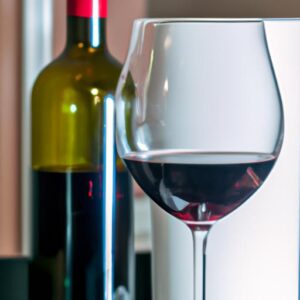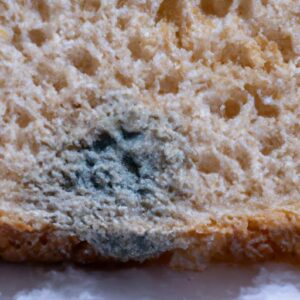Cooking is a fundamental aspect of our daily lives. It brings us joy, nourishment, and an opportunity to unleash our creativity in the kitchen. But have you ever wondered if cooking is more than just a physical transformation of ingredients? Is there a chemistry unfolding behind the sizzling pans and aromatic spices? In this article, we will explore the fascinating question: is cooking a chemical change?
A. Definition of cooking
Before diving into the scientific realm, let’s establish what cooking truly entails. Cooking is the process of preparing food by applying heat or combining ingredients to transform raw materials into delicious and edible creations. From boiling and baking to sautéing and grilling, this culinary artistry involves a multitude of techniques and methods.
B. Explanation of chemical change
To comprehend the concept of a chemical change, we must understand that it involves the rearrangement of atoms and the formation of new substances with different properties. In simpler terms, it is a transformation at the molecular level that leads to the creation of entirely new compounds. These changes are irreversible, unlike physical changes that can be reversed without altering the substance’s composition.
C. Overview of the article’s purpose
Now that we have a clear understanding of cooking and chemical changes, let’s embark on a journey to explore the scientific aspects hidden within our kitchens. Throughout this article, we will unravel the intricate connection between cooking and chemical changes, examining the evidence that supports the idea of cooking as a chemical change. Join me as we uncover the secrets behind the enticing aromas, mouthwatering flavors, and captivating chemistry that make cooking a truly remarkable experience.
Stay tuned for the next section, where we will delve into the fundamental understanding of chemical changes and differentiate them from physical changes. Get ready to expand your culinary knowledge and discover the scientific wonders behind your favorite recipes.
Understanding Chemical Changes
A. Explanation of Physical Changes
Before we dive deeper into the realm of chemical changes, let’s first grasp the concept of physical changes. Physical changes involve alterations in the appearance, state, or form of a substance without any change in its chemical composition. Think of melting ice into water or cutting a piece of fruit. These transformations can be reversed, and the substance retains its original properties.
B. Differentiating Chemical Changes from Physical Changes
Now that we have a clear understanding of physical changes, it’s time to differentiate them from chemical changes. Unlike physical changes, chemical changes result in the formation of new substances with different properties. During a chemical change, bonds between atoms break and reform, leading to the creation of entirely new molecules. This transformation is accompanied by various observable signs, such as color changes, the release of gas, or the production of heat.
C. Examples of Common Chemical Changes
To further illustrate the distinction between physical and chemical changes, let’s explore some common examples of chemical changes that occur during cooking. When bread is baked, the heat causes the Maillard reaction, resulting in the browning of the crust and the development of new flavors. Similarly, caramelizing sugar involves the breakdown of sugar molecules, leading to the formation of a golden-brown syrup with a rich taste.
Another example is the process of fermentation, where yeast converts sugars into carbon dioxide and alcohol, transforming dough into light and fluffy bread. The emulsification of oil and vinegar to create salad dressing is yet another chemical change, as the ingredients combine to form a stable mixture.
Understanding the distinction between physical and chemical changes is crucial in unraveling the science behind cooking. In the next section, we will explore the intricate science that unfolds when we apply heat to ingredients and delve into the fascinating world of chemical reactions during cooking. Get ready to uncover the secrets behind the magic that happens on your stovetop or in your oven!
The Science Behind Cooking
Cooking is more than just a combination of ingredients and a dash of heat; it is a captivating scientific process that transforms raw components into delectable masterpieces. Let’s explore the science behind cooking and uncover the magic that happens in our pots and pans.
A. Overview of the Cooking Process
The cooking process involves a series of steps that vary depending on the recipe and desired outcome. It typically includes preparation, combining ingredients, applying heat, and monitoring the progress. Whether you’re simmering a stew or baking a cake, each cooking method follows a specific set of principles and techniques.
B. How Heat Affects Ingredients
Heat is a crucial element in cooking, and it plays a significant role in the chemical changes that occur during the process. As heat is applied, the molecules within the ingredients gain energy, causing them to move more rapidly. This increased molecular motion leads to various transformations, such as the denaturation of proteins, the breakdown of carbohydrates, and the evaporation of liquids.
C. Chemical Reactions During Cooking
Chemical reactions are at the heart of cooking. When heat is applied to ingredients, it triggers a multitude of chemical reactions that contribute to the transformation of food. These reactions can include caramelization, Maillard browning, fermentation, and many others. Each reaction introduces new flavors, textures, and aromas, enhancing the overall culinary experience.
By understanding the science behind cooking, we gain insights into the complex processes that occur in our kitchens. In the next section, we will explore the intriguing question: Is cooking a chemical change? Join me as we delve deeper into the scientific realm and uncover the truth behind the magic of cooking.
Is Cooking a Chemical Change?
Cooking has always been regarded as a transformative process, but let’s dig deeper and explore whether it truly qualifies as a chemical change. By examining the definition of cooking, analyzing the chemical reactions involved, and assessing the evidence, we can uncover the truth behind this culinary phenomenon.
A. Examining the definition of cooking
To determine if cooking is a chemical change, we must scrutinize its core essence. Cooking involves subjecting ingredients to heat and various cooking techniques, resulting in a wide array of flavors, textures, and appearances. It goes beyond mere physical alterations and involves intricate chemical reactions that give rise to new compounds and flavors.
B. Analyzing the chemical reactions involved in cooking
Chemical reactions are the driving force behind the various changes that occur during cooking. When ingredients are exposed to heat, numerous chemical reactions take place. For example, the Maillard reaction occurs when proteins and sugars react, creating a complex network of flavors and browning the surface of foods. Additionally, the denaturation of proteins, caramelization of sugars, and oxidation of fats are all chemical transformations that contribute to the delectable outcomes of cooking.
C. Evidence supporting cooking as a chemical change
The evidence supporting cooking as a chemical change is abundant. Scientists have extensively studied the molecular transformations that occur during cooking, unveiling the intricate chemistry behind our favorite dishes. Through advanced techniques such as spectroscopy and chromatography, they have identified the formation of new compounds and the breakdown of existing ones. These findings provide concrete evidence that cooking is indeed a chemical change.
By examining the definition of cooking, analyzing the chemical reactions involved, and considering the scientific evidence, we can confidently assert that cooking is undeniably a chemical change. Stay tuned as we explore the effects of these chemical changes on taste, texture, and nutrition in the next section. Brace yourself for a deeper understanding of the fascinating world of culinary chemistry.
Conclusion
After exploring the fascinating world of cooking and chemical changes, it is evident that cooking is indeed a chemical change. By applying heat and combining ingredients, we unleash a series of chemical reactions that transform raw materials into mouthwatering dishes. The rearrangement of atoms leads to changes in taste, texture, appearance, and even nutritional composition.
Throughout this article, we have discovered the profound impact of chemical changes on cooking. The flavors we savor, the textures we relish, and the visual appeal of our meals all stem from the intricate chemistry happening behind the scenes. By understanding the science behind cooking, we can elevate our culinary skills and create even more delightful experiences in the kitchen.
As you embark on your culinary adventures, remember that cooking is not only an art but also a science. Embrace the chemical changes occurring in your pots and pans, and let your creativity flourish. Experiment with different ingredients, techniques, and flavors, all while appreciating the transformative power of chemistry in the realm of cooking.
So, the next time you find yourself in the kitchen, marvel at the remarkable journey of ingredients undergoing chemical changes, and relish the harmonious combination of flavors and textures that result. Happy cooking, and may your culinary endeavors be infused with the magic of chemistry!
Thank you for joining me on this exploration of whether cooking is a chemical change. Keep expanding your knowledge, experimenting with new recipes, and savoring the delightful results. Until next time, happy cooking!


